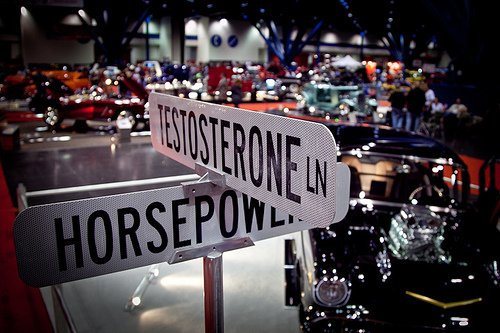
What Is Testosterone?
Testosterone is a natural steroid hormone manufactured by the testes in men, the ovaries in women, and by the adrenal glands in both sexes. Men's bodies typically make about 20 times as much testosterone as women's bodies, and women are far more sensitive to small amount of the hormone. Testosterone is responsible for a number of bodily characteristics associated with masculinity. These include sex drive, hairiness, oily skin, muscle growth, and thinner fat layers in the face. Testosterone causes these effects in both men and women. Testosterone also regulates both mental and physical energy, and increases the blood's ability to clot when the body is injured.

Possible Causes of Low T
Men who go through "manopause" and start making less testosterone typically have packed on a few extra pounds. Fat cells don't just store fat in older men. They are also hormone factories, converting free testosterone into estrogen, which has the especially undesirable effect of encouraging storage of still more fat in the form of "man boobs" and extra fat on the buttocks. Buttocks fat in men breaks down testosterone into estrogen up to 10 times faster than fat at other sites on the body. Since a woman's testosterone is mostly made in her ovaries, menopause and surgical removal of the ovaries are the main causes of low testosterone levels in women.
- Important notification about information and brand names used in this slideshow!
- Photo courtesy of gamsiz by Flickr : www.flickr.com/photos/gamsiz/223135310/
- McGill JJ, Shoskes DA, Sabanegh ES. Androgen deficiency in older men: indications, advantages, and pitfalls of testosterone replacement therapy. Cleve Clin J Med. 2012 Nov
- 79(11):797-806. doi: 10.3949/ccjm.79a.12010.

Testosterone And Libido
Many users of testosterone replacement therapy, both men and women, are primarily interested in rekindling their interest in sex. Many men find that testosterone replacement therapy does more for their sex lives than Cialis, Viagra, or Levitra. In older men who also have type 2 diabetes, testosterone replacement not only increases interest in sex, it also reduces insulin resistance, sometimes enough to cause the desirable side effect of reducing diabetes medications. In the United States, over 4 millon women per year receive "off label" prescriptions for testosterone for loss of libido, particularly after oophorectomy (surgical removal of the ovaries). In women, the testosterone patch is more often prescribed that other forms of testosterone for restoration of sex drive.
- Important notification about information and brand names used in this slideshow!
- Photo courtesy of kedai lelaki by Flickr : www.flickr.com/photos/40110070@N02/5267517689/
- Pluchino N, Carmignani A, Cubeddu A, Santoro A, Cela V, Alcalà TE. Androgen therapy in women: for whom and when. Arch Gynecol Obstet. 2013 Aug 3. [Epub ahead of print].
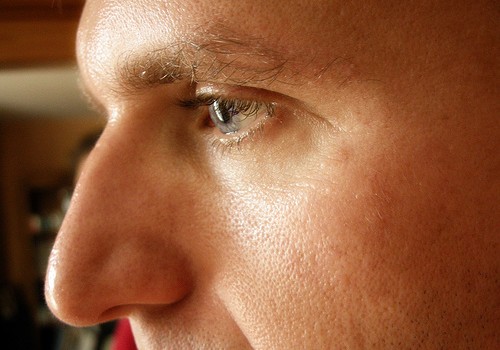
What Really Is "Low T?"
When it comes to testosterone levels, "low" is usually determined by the lowest commonly observed levels in younger adults. The problem is, each lab has a slightly different reference level for testosterone testing. However, if a man's "total testosterone" is under 350 nanograms per deciliter, no matter what his age, his doctor will probably label the level as "low." One of the problems that arises from having a testosterone test done without a doctor's supervision (which is possible in most states in the US) is that testosterone can be measured as free testosterone, SHBG-bound testosterone, and albumin-bound testosterone, and the numbers the lab sends back are for "total testosterone" (the sume of all three) and free testosterone. Free testosterone levels are much lower than total testosterone levels, and testosterone levels taken later in the day (after 10 am) are up to 20% lower than testosterone levels taken in the morning. Defining "low T" in women is still largely a matter of the doctor's judgment.
- Important notification about information and brand names used in this slideshow!
- Photo courtesy of Bruce by Flickr : www.flickr.com/photos/superfantastic/2950235922/
- Choudhury BK, Choudhury SD, Saikia UK, Sarma D. Gonadal function in young adult males with metabolic syndrome. Diabetes Metab Syndr. 2013 Jul-Sep. 7(3):129-32. doi: 10.1016/j.dsx.2013.06.013. Epub 2013 Aug 2.
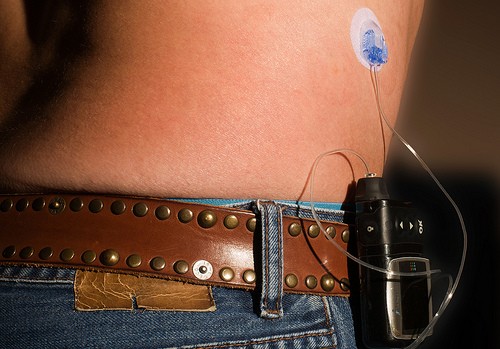
What Happens When We Don't Have Enough Testosterone?
Both men and women may experience "low T," or low levels of testosterone. In men, deficiencies of testosterone can result in diminished sex drive. They are less likely to become sexually aroused, and they also are less likely to be "energized" by sexual experience. After the age of 40, low testosterone levels in men are often associated with type 2 diabetes, high cholesterol, high triglycerides, anemia, kidney failure, and osteoporosis. Women who have low testosterone levels, "low" testosterone levels in women about 5% of what they are in men, also lose interest in sex. In men, just thinking about sex raises testosterone levels. In women,
- Important notification about information and brand names used in this slideshow!
- Photo courtesy of Alden Chadwick by Flickr : www.flickr.com/photos/aldenchadwick/6523631101/
- Mooradian AD, Korenman SG. Management of the cardinal features of andropause. Am J Ther. 2006 Mar-Apr. 13(2):145-60. Review.

Testosterone Replacement Therapy
Testosterone replacement therapy isn't always about stimulating desire for sex. In men, testosterone is used to encourage penis growth, to encourage the growth spurt in young males who didn't experience it at puberty, to stimulate muscle growth, to increase red blood cell production, and even to increase appetite. Men may take testosterone injections or use a testosterone patch. Women, on the other hand, are typically given a prescription for the patch rather than an injection. Men who have a history of prostate problems or prostate cancer generally are not given testosterone replacement therapy, and neither will women be given testosterone replacement if there is any possibility of pregnancy.
- Important notification about information and brand names used in this slideshow!
- Photo courtesy of Adrian Scottow by Flickr : www.flickr.com/photos/chodhound/5500803188/
- Andersson KE. Erectile physiological and pathophysiological pathways involved in erectile dysfunction. J Urol. Aug 2003.170(2 Pt 2):S6-13
- discussion S13-4.
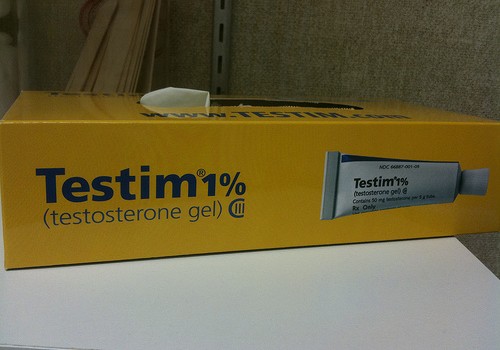
Testosterone Gel And Patches
Testosterone gel, usually delivered by a patch, is by far the most common form of testosterone replacement for women. Because women are unusually sensitive to changes in testosterone levels and a gel or patch delivers a much smaller, safer dose of testosterone than an injection or a suppository, the gel patch is the favored form of testosterone replacement therapy for women. Men are more likely to receive injections, although sometimes a low-dose patch is recommended for a man who has diabetes or cardiovascular disease. Be sure to let your doctor know about all the medications and herbal preparations you take, sometimes testosterone replacement therapy increases their side effects.
- Important notification about information and brand names used in this slideshow!
- Photo courtesy of anokarina by Flickr : www.flickr.com/photos/anokarina/4015453081/
- Androderm, Drugs.com, http://www.drugs.com/cdi/testosterone-patch.html, Accessed 21 August 2013.

Injections
Many men who take testosterone injections complain of pain, and some just can't give the injections to themselves. This is because testosterone shots are typically intramuscular, injected into muscle rather than just into the fatty tissue immediately beneath the skin. It is extremely important to make sure your doctor knows all the medications you are taking before you take testosterone replacement injections. Testosterone can increase the activity of some, but not all, anticoagulants (blood thinners) and some, but not all, antibiotics and antidepressants. If you can't give yourself an injection into muscle, get someone to do this for you, so you will get the full benefit of the drug.
- Important notification about information and brand names used in this slideshow!
- Photo courtesy of Linden Tea by Flickr : www.flickr.com/photos/linden_tea/4564568606/
- Medscape, Depotest, http://reference.medscape.com/drug/depo-testosterone-342795#3, Accessed 21 August 2013.
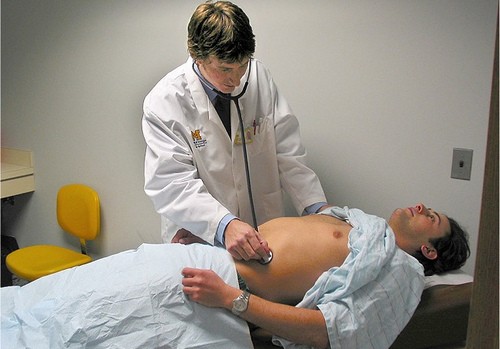
When To See The Doctor
Testosterone replacement therapy is not something anyone, male or female, should attempt to manage on his or her own. Because the symptoms of low testosterone are subjective, however, it may be hard to find a doctor who is sympathetic to your complaints. Basically, if your sex life is unsatisfactory, and you think testosterone might be the answer, you should see a doctor who is willing to run the right tests to find out. This is true for both men and women. Men should also see their doctors if they have iron overload disease or type 2 diabetes and are concerned about sexual function, as these conditions often accompany easily correctable low testosterone levels.
- Important notification about information and brand names used in this slideshow!
- Photo courtesy of University of Michigan MSIS by Flickr : www.flickr.com/photos/umich-msis/6550209729/
- Miner M, Seftel AD, Nehra A, Ganz P, Kloner RA, Montorsi P. Prognostic utility of erectile dysfunction for cardiovascular disease in younger men and those with diabetes. Am Heart J. Jul 2012. 164(1):21-8.
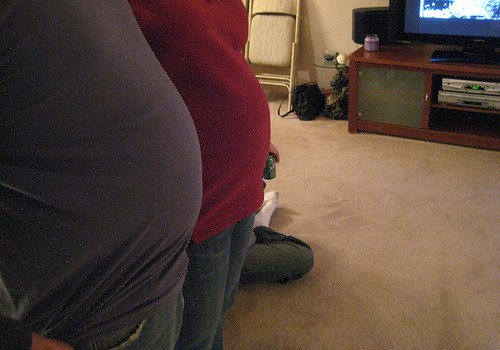
Who Shouldn't Take Testosterone?
Although manufacturers of Depotest, the injectable form of testosterone, say that their product should not be used by "women" or by people who are "pregnant or nursing," the bottom line is, if you are a woman, you shouldn't take injected testosterone. There is simply too much testosterone in the product for women. Women may be able to use testosterone patches if the doctor approves. Men who have had cancer of the prostate or cancer of the breast, or who have severe heart, liver, or kidney disease, usually should not take testosterone of any kind. Unexpected results may occur in men who have gynecomastia, enlargement of the breasts. Women must not take testosterone if they could be or could become pregnant.
- Important notification about information and brand names used in this slideshow!
- Photo courtesy of infowidget by Flickr : www.flickr.com/photos/infowidget/2319669959/
- Hulmi JJ, Ahtiainen JP, Selänne H, Volek JS, Häkkinen K, Kovanen V, Mero AA (May 2008). "Androgen receptors and testosterone in men—effects of protein ingestion, resistance exercise and fiber type." J. Steroid Biochem. Mol. Biol. 110 (1–2): 130–7.




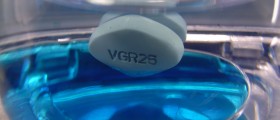






_f_280x120.jpg)


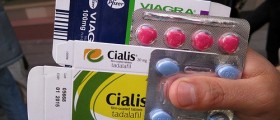








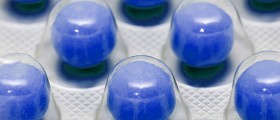
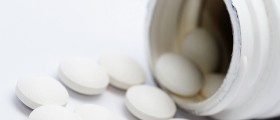
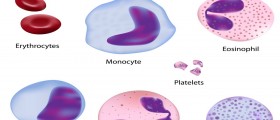
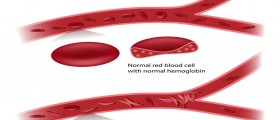
Your thoughts on this
Loading...